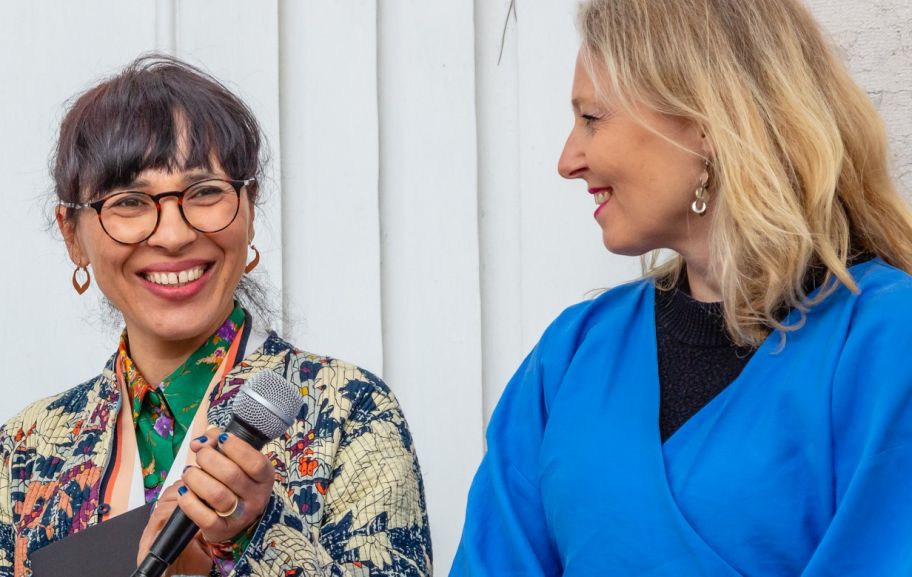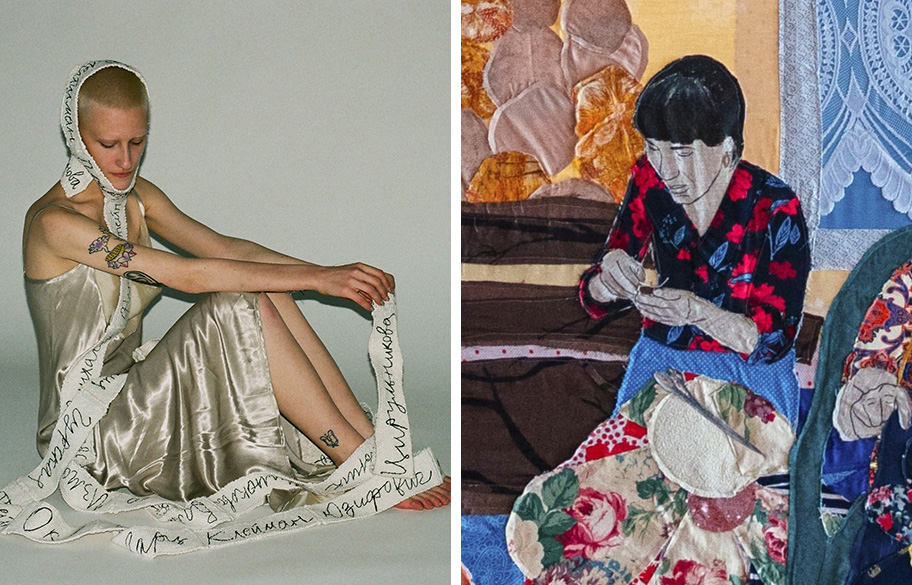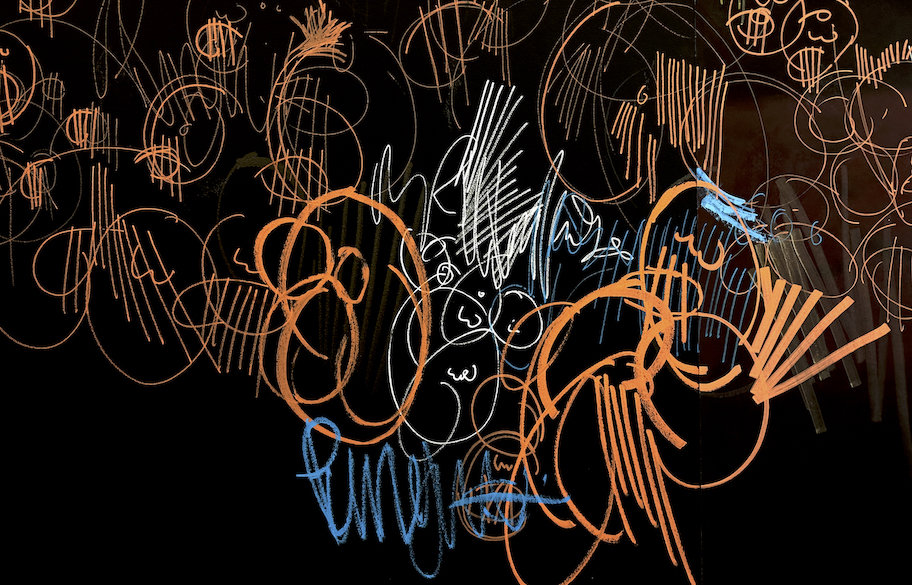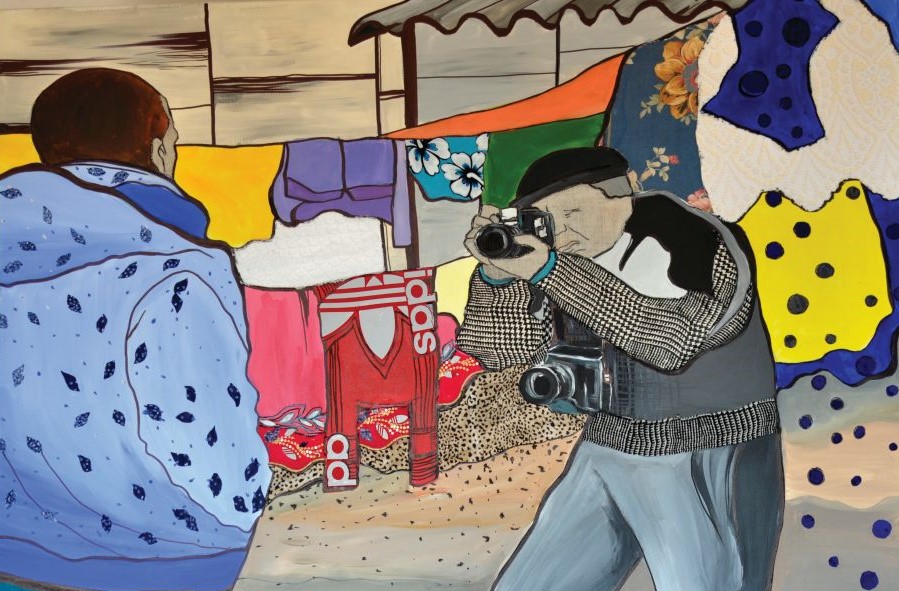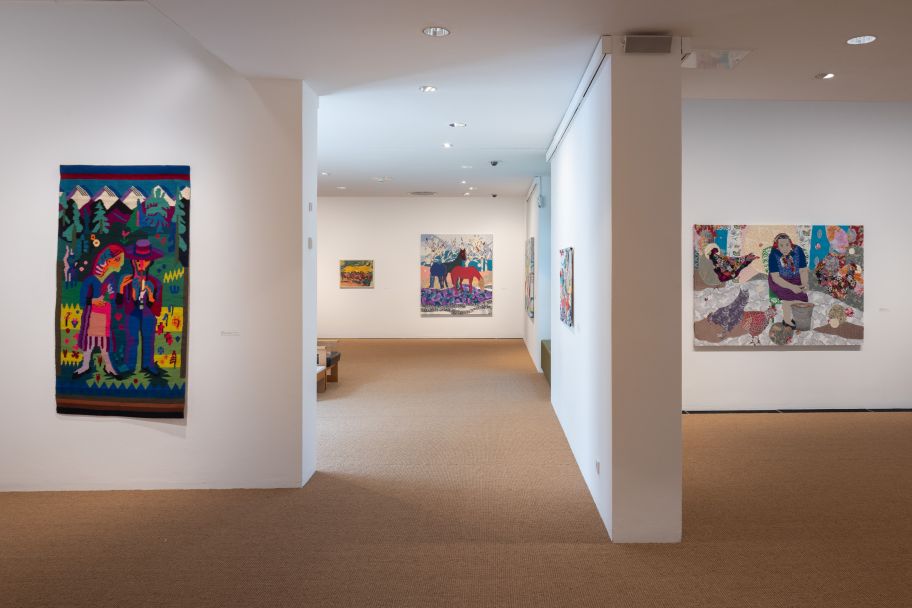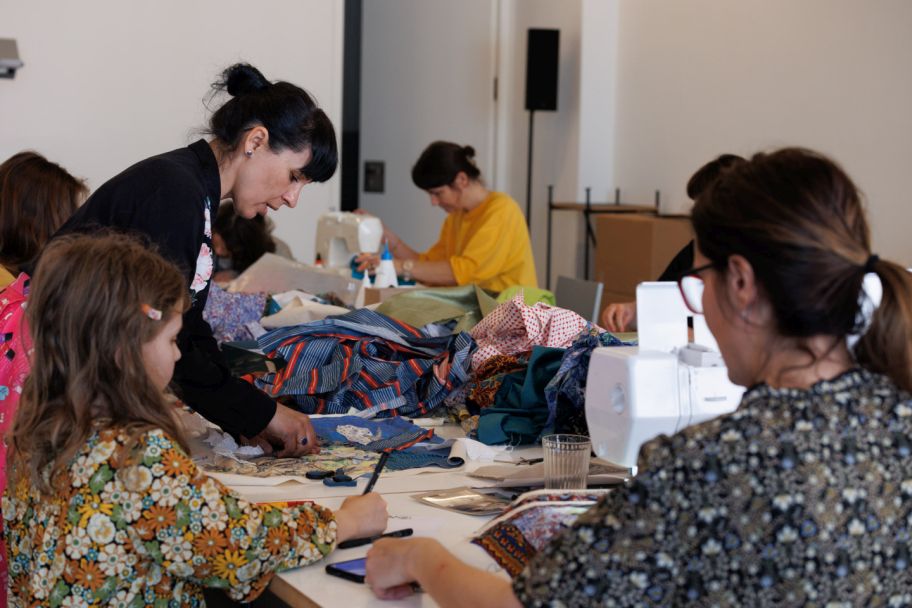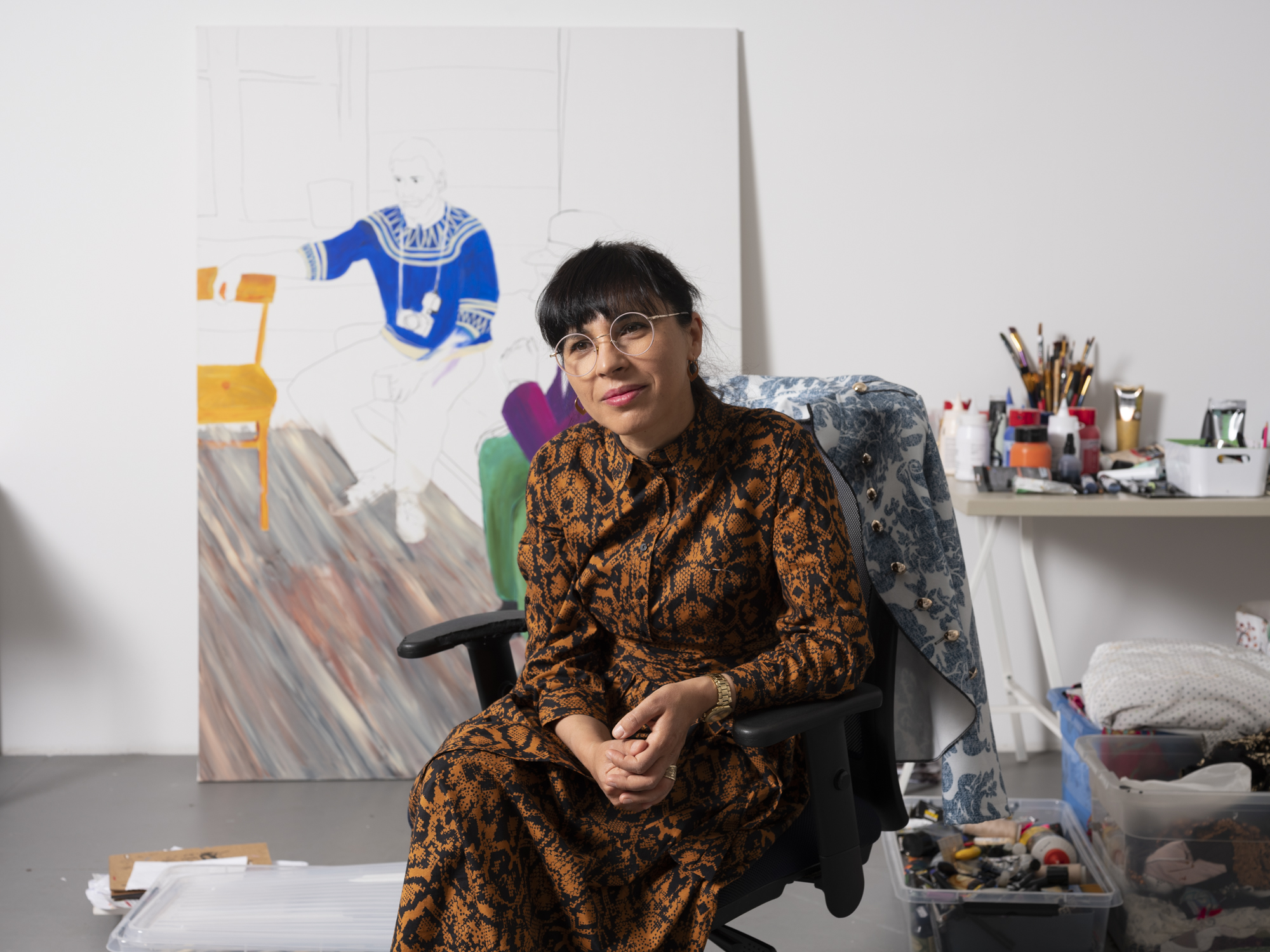Poland, Visual Arts, 2022
Małgorzata
Mirga-Tas
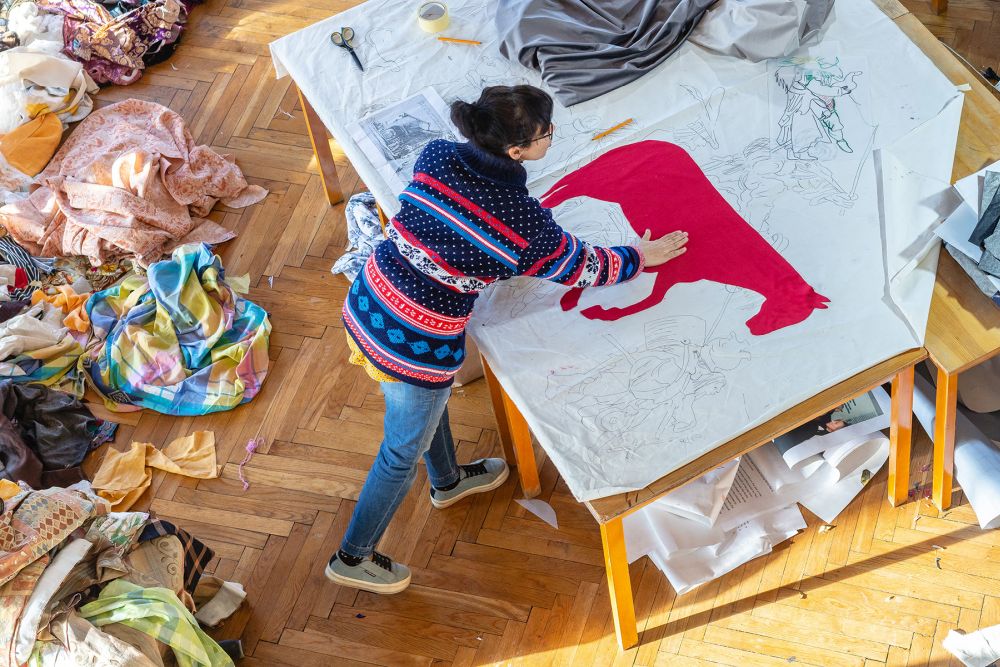
“Shall I give this skirt to someone, or do you want it for your work?,” MałgorzataMirga-Tas’s mother would often ask. The artist’s collages are created from fragments of various fabrics by, as she says, “throwing the material into the painting.” Many of the pieces sewn onto the canvas are taken directly from the wardrobes of those depicted, bearing traces of life and use to create feminist narratives about “bright people and their characters.”
Mirga-Tas was born in Zakopane in Poland in 1978 and graduated from the Academy of Fine Arts in Kraków. She lives in a Roma settlement in Czarna Góra, in the Tatra Mountains, where she also works as an educator and activist. Her vibrant patchworks, sculptures, and collages often depict scenes from Roma communities. They present affective herstories, sometimes of children or animals, less often of men.
Needlework is one of her basic techniques. The needle, with its magic power—as Louise Bourgeois described it—“is used to repair the damage. It’s a claim to forgiveness.” In her patchworks, Mirga-Tas often symbolically repairs the relationships between marginalized Roma people in the fabric of European society. Her practice is allied with the work of academics and artists who have been demonstrating that the culture of this largest European minority (of twelve million people) can be influential in society, not just at its mercy. She weaves an image of Roma as proto-Europeans, as multilingual, transcultural, and non-violent people, reshaping the conventions and decolonizing the imagination.
Mirga-Tas’s work is also a form of art as recovery, between what is professional high art and its vernacular sources. Echoing Lucy Lippard’s views on crafts and feminism, the artist sees all the arts as products of a creative impulse which is “as socially determined as it is personally necessary.”
Mirga-Tas calls herself a feminist and practices minority feminism, although, as she told me, “Many women around me view this term with suspicion.” According to researcher Ethel C. Brooks, minority feminism does not cut women from their backgrounds, it works from within a specific context, on both the local and structural level. Mirga-Tas’s practice of sisterhood and her rooting in Roma identity are situated ideas first, and theoretical concepts later. Working together with her on the Polish Pavilion at the 59th Venice Biennale made me realize that Mirga-Tas is one of the most integral artists I have ever met. One creates an instant connection to her work, and at the same time, it offers a depth of endless layers. She weaves a new textile grammar, full of intercultural threads, patchwork families, second-hand use, and webs of interdependency. Sometimes it doesn’t fit, and it doesn’t have to. Stitches remain visible.
Text: Joanna Warsza
Past
-
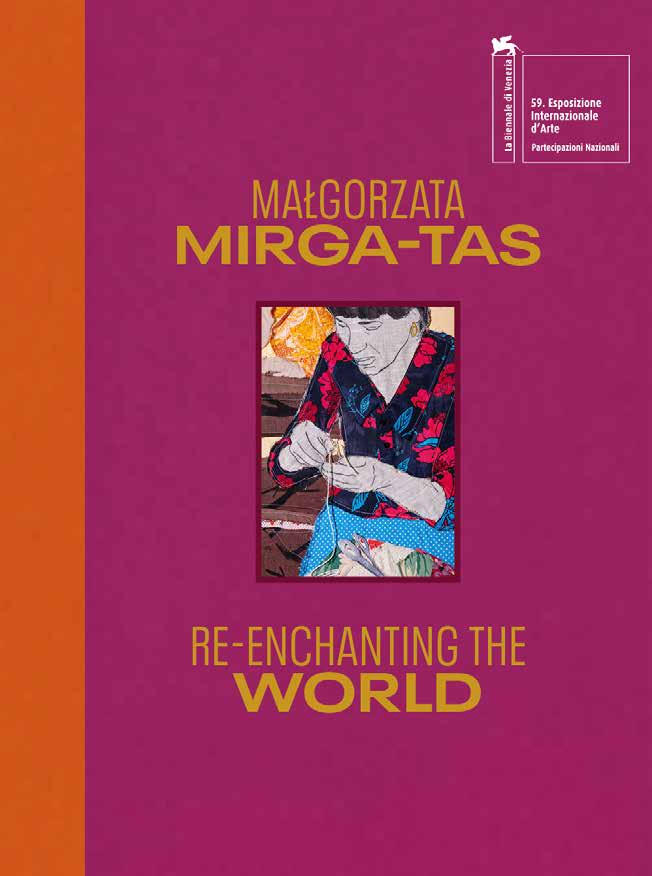
Małgorzata Mirga-Tas: Re-Enchanting the World
Małgorzata Mirga-Tas2022, Catalog

Catalog published on the occasion of the exhibition in the Polish Pavilion at the 59th International Art Exhibition – La Biennale di Venezia 2022.
In Polish and English, with essays by Ali Smith, Damian Le Bas and Ethel Brooks, and poems by Teresa Mirga and Jan Mirga. Supported by the DAAD Artists-in-Berlin Program with funds from the German Federal Foreign Office.Małgorzata Mirga-Tas is fellow of the Artists-in-Berlin Program in 2022.


